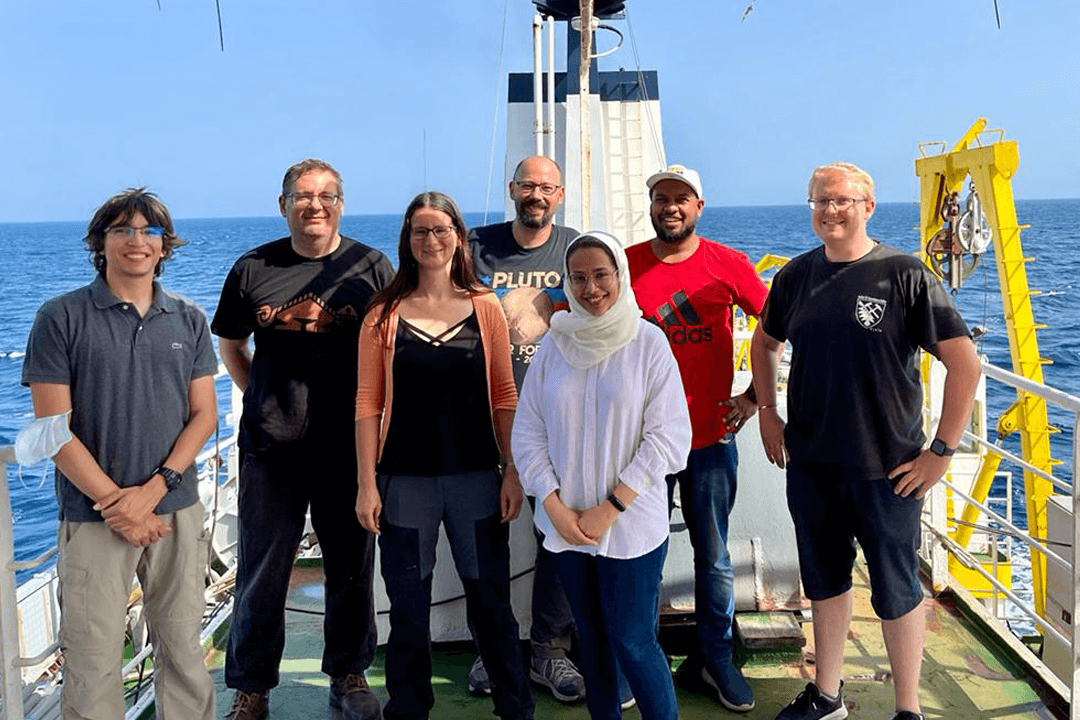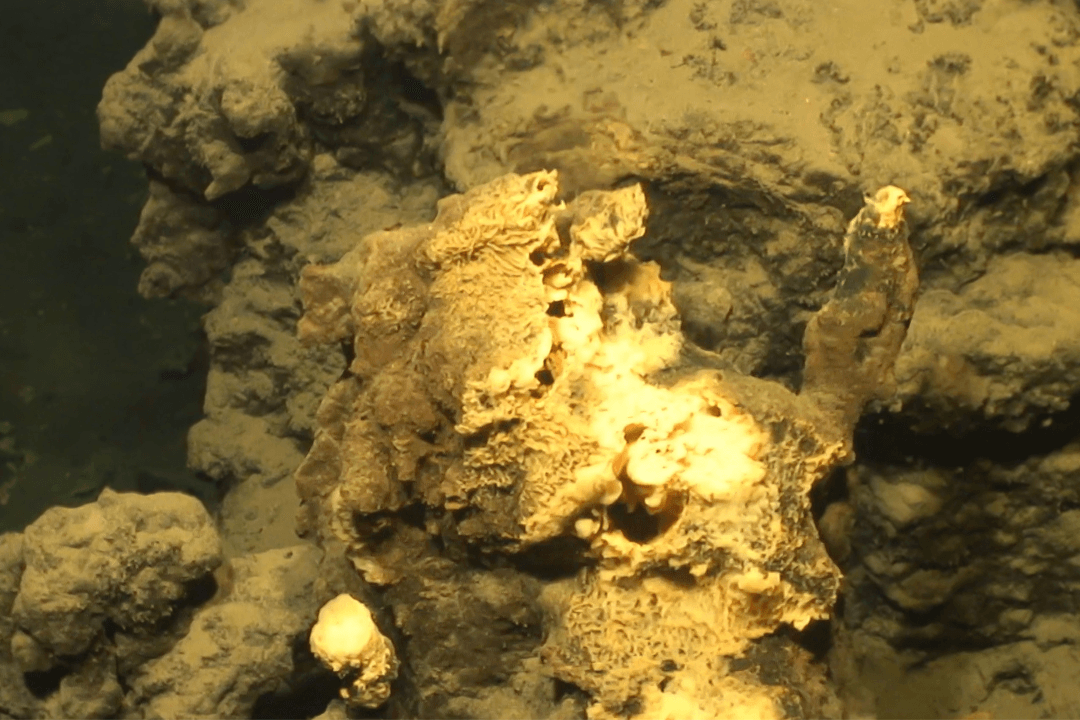First ever hydrothermal vent fields found in the Red Sea

Some of the KAUST researchers involved in the project. Professor Froukje van der Zwan is third from left.
KAUST scientists have reported the first observations of active hydrothermal vent fields in the Red Sea. The total area of these active fields on Hatiba Mons, a major volcano in the Red Sea rift, is the largest reported in the world. The findings are expected to give insights into the biological and mineralogical resources of the deep Red Sea, one of the youngest ocean bodies in the world, and the evolution of life in extreme environments.
Hydrothermal vents are hot springs produced by underwater volcanoes at tectonic plate boundaries. The venting of warm fluids, heated by magma under the volcano, is associated with unusually high amounts of microbial communities.
The project, which was led by KAUST Professor Froukje van der Zwan, builds on more than 10 years of observations and sample collection. While data collected since the beginning of 2011 has continued to suggest the existence of hydrothermal vents, the vents were not confirmed directly until van der Zwan and her team were able to see them with cameras mounted onto remotely operated underwater vehicles (ROVs) that were descended 1,000 m into the Red Sea in 2022 and 2023. The results are published in Communications Earth & Environment.
"It was a long process and a combination of our expertise with different deep-sea vehicles, equipment and research vessels. Rock samples, water column data and bathymetric maps all indicated hydrothermal venting, but we did not confirm them with certainty until we deployed the ROVs," she said. Scientific data has suggested the existence of hydrothermal vents in deep high-saline brine pools of the Red Sea since the 1960s, but until now there has been no direct visual evidence, partly because equipment could not withstand the corrosive and hot environments associated with these brines.

A photo from the expedition of the hydrothermal vents
The scientists mapped 45 vent fields in Hatiba Mons that covered a remarkably large total area of 1.6 km2. All 14 of the directly observed fields were actively venting, which is unlike other vent fields in midocean ridges worldwide where active venting is often limited to smaller areas.
The low temperatures of the vents (40 degrees Celsius) contributed to their many iron-oxyhydroxide mounds that hosted thriving microbial communities. In turn, these communities are believed to contribute to the large mounds, creating positive feedback conditions in which life can flourish. Notably, there was little macrofauna near the vents, reiterating the possibility that these microbial communities can provide clues on how life first formed and adapted in the deep sea.
When adding the temperature of the Red Sea, which is warmer than other seas, van der Zwan and her colleagues speculated that the fields make an ideal model for studying how life formed in the Precambrian, which is the earliest period of the Earth’s history and when life first emerged.
“The buildup of very large iron deposits by microbes at Hatiba Mons is comparable to what happened in the Precambrian, and the warm saline deep-sea water of the Red Sea is closer to Precambrian ocean conditions than other oceans,” she said.
The research was conducted in collaboration with scientists at the GEOMAR Helmholtz Centre for Ocean Research, Germany, using multiple research vessels and deep-ocean research equipment, and included staff from KAUST, Fugro and the Hellenic Centre for Marine Research.

